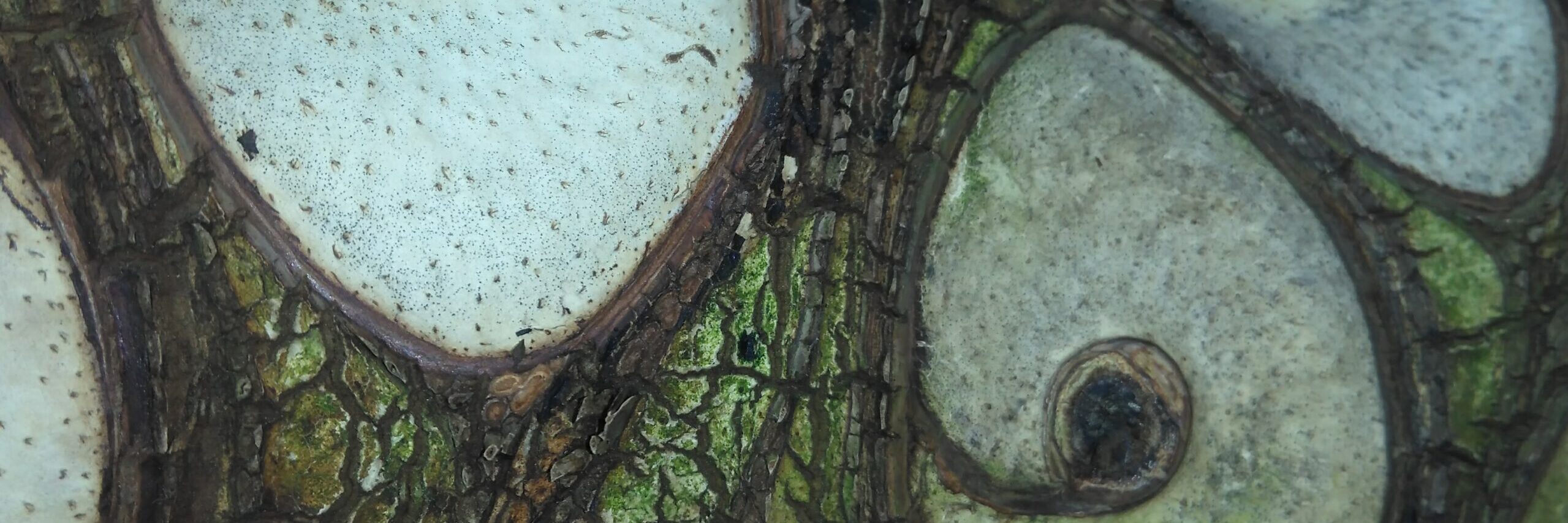Whether you pronounce the “ich” as in like or as in itch doesn’t really matter. (As a matter of preference I say it as in like, as I like them – but I use to say it as in itch as it figuratively scratches something that itches in me!) This species is something that I have taken an interest in recently. Every now and then it is good to expand ones knowledge in a new sphere of natural history.
Due to the bareness of trees this time of year and the low levels of insects and other more seasonal species they are great to look at. By the time you read this it will still be possible to see them as the leaves won’t be fully out on the trees. Not only can they be found on trees but all around us and can be easily overlooked. (Like the one that is often mistaken for chewing gum on the path!) Tristan Gooley says in his latest book The Walkers Guide to Outdoor Clues and Signs they are probably one of the most underrated and underappreciated species. He mentions Carl Linnaeus the great 18th Century Botanist who calls them rustici pauperrimi – poor little peasants of nature.
|
|
|
Not some kind of lettuce(!) but Xanthoria parietina (Yellow scale)
2-3cm on a twig – Greeny yellow in colour
|
With a number of lichens they can be so small that you may overlook them so using a good hand lens is essential. I purchased a pack from the Field Study Council (FSC) which included a card hand lens x 10 magnification which sounds naff but is actually good quality for such a cheap looking piece of kit! The pack also contains a number of these fold-out-cards specifically on lichens in certain habitats. You can find these cards in National Trust shops and similar centres for about £3.50. Incidentally this isn’t an advert although it does appear so! This is cheaper than buying the top field guide on the subject for 10 times the price! The FSC also recommends using an eye-dropper with a drop of domestic bleach squirted on the surface of some lichen’s as they can be distinguished from similar species in this manner.
Whilst thinking about the subject I have to say a little more about these amazing little communities. I say communities as lichen’s are not actually one species at all. In fact they are made up of two or more species. Usually there is a fungi and an algae forming what biologists call a symbiotic relationship. This is a relationship that is mutually beneficial to both parties involved. The algal partner produces essential nutrients for the fungi whilst the fungi provides protection from extreme conditions like heat or drought.
Strangely the part of the Bible that came to my mind was that of Psalm 133:1 Behold, how good and how pleasant it is for brethren to dwell together in unity! ‘Together’ and ‘unity’ come from the same Hebrew word. See what happens in the Psalm when humans get along like the algae and the fungi do. This symbiotic relationship also made me think of how when we partner with God we are much more effective. See what happens when we live together in harmony (v3). Another thing that lichen’s indicate is the natural health of our environments are we taking or giving back to the world? Are we demonstrating the community of God in our lives? Good news can be seen in the small things!
I expect there is more we can learn from this community than I have shown here, I’ll let you do some thinking to. For further information on lichen’s: Natural History Museum/

